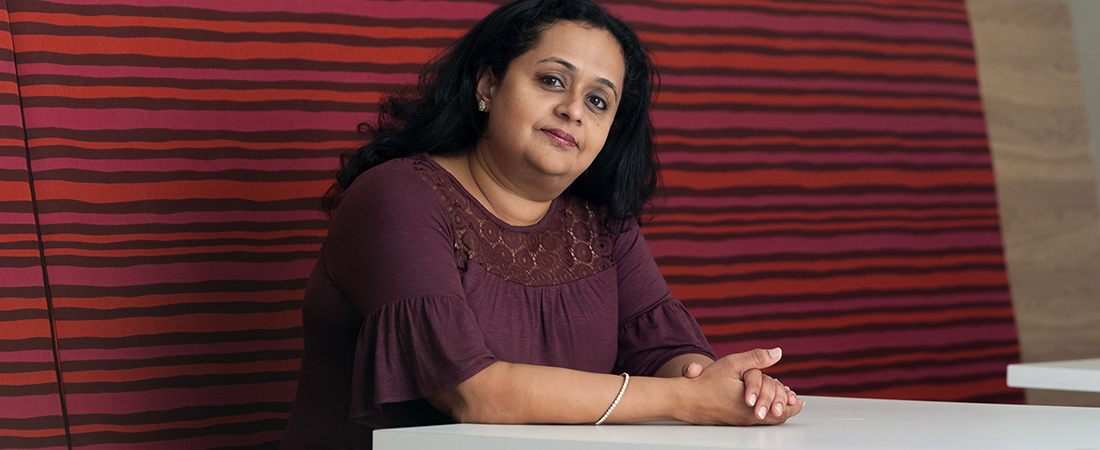Expanding the Boundaries in STEM

“Equity and excellence are inseparable,” says EDC's Sarita Pillai.
EDC's work in STEM education gives students a solid foundation in skills that will create career pathways. Learn more.
Growing up in Bahrain, EDC’s Sarita Pillai was surrounded by cultural norms about a woman’s place in society. But she never believed that those norms applied to her.
“Within my family, I never felt any limits on what I could do,” she says. “My parents encouraged anything and everything from an academic standpoint.”
She eventually fell in love with computer science and followed her passion for the subject to Northeastern University in Massachusetts. But when she arrived on campus, Pillai was surprised to find she was one of only four women in her freshman computer science cohort.
“It made me realize an inequity I had not perceived before,” she says. “My life experience until then did not have a ‘gendered’ lens of boys versus girls. It became clear that not everyone had the same experience.”
After graduating in 1993, Pillai used her computer science degree to build a career in the high-tech sector. But within a few years, she was ready for a change. She began looking for ways to apply her knowledge of computer science more broadly and was especially interested in programs that would break down the barriers to STEM participation that she had witnessed in college and the workforce.
Pillai joined EDC in 2001, and in her work here, she has been laser-focused on helping more people from underrepresented communities feel like they belong in computer science, engineering, biotechnology, and other STEM fields. Her first project was to build a gender-equitable STEM digital library—essentially, a curated collection of resources, such as profiles of famous female scientists, that was intended to inspire more girls to pursue STEM learning and careers. Now, she is the principal investigator of the National Science Foundation’s STEM Learning and Research Center (STELAR), which supports programs that help engage young people from underrepresented communities in STEM opportunities that they might otherwise miss.
Pillai’s work is critical in an age when equal opportunity in STEM careers remains a real challenge. The percentage of women studying computer science has decreased dramatically since the 1980s, and a recent Pew Research Center report found that Black and Hispanic workers are consistently underrepresented in STEM.
This matters, says Pillai, because shutting whole populations out of STEM careers reduces opportunity and progress for everyone.
“The work in broadening STEM participation is not just a matter of social justice,” she says. “It’s to enable greater innovation. Diversity drives innovation in any field. Bringing together people who have different experiences to draw on—different ages, gender, and cultural and linguistic backgrounds—advances the work.”
More opportunities for underrepresented youth to do computer science and STEM are essential, says Pillai. Afterschool programs, enrichment opportunities, and school-industry partnerships all make a big difference. Through her work on STELAR, she believes she is helping to deliver those opportunities.
But at a general level, the whole notion of who “does” science also has to be challenged. And that is a trickier problem to solve.
“We continually send girls barely veiled messages about who they can be,” she says. She recounts a recent experience of looking through the summer study workbook for her third-grade daughter and happening upon a language exercise that involved a story about a dentist’s office.
“The opening lines were, ‘Dr. DeSoto is a popular dentist. Mrs. DeSoto is his assistant.’ I thought, ‘Really? In 2018?’”
Pillai knows that the timeline for seeing the impact of her work could stretch far into the future, as it could take time to root out biased perceptions about who belongs in STEM. But as she looks ahead, she is confident that her efforts will help create a more diverse, representative field of STEM professionals—and that these new faces will push the disciplines further than they have gone before.
“Equity and excellence are inseparable,” says Pillai. “It’s as simple as that.”
